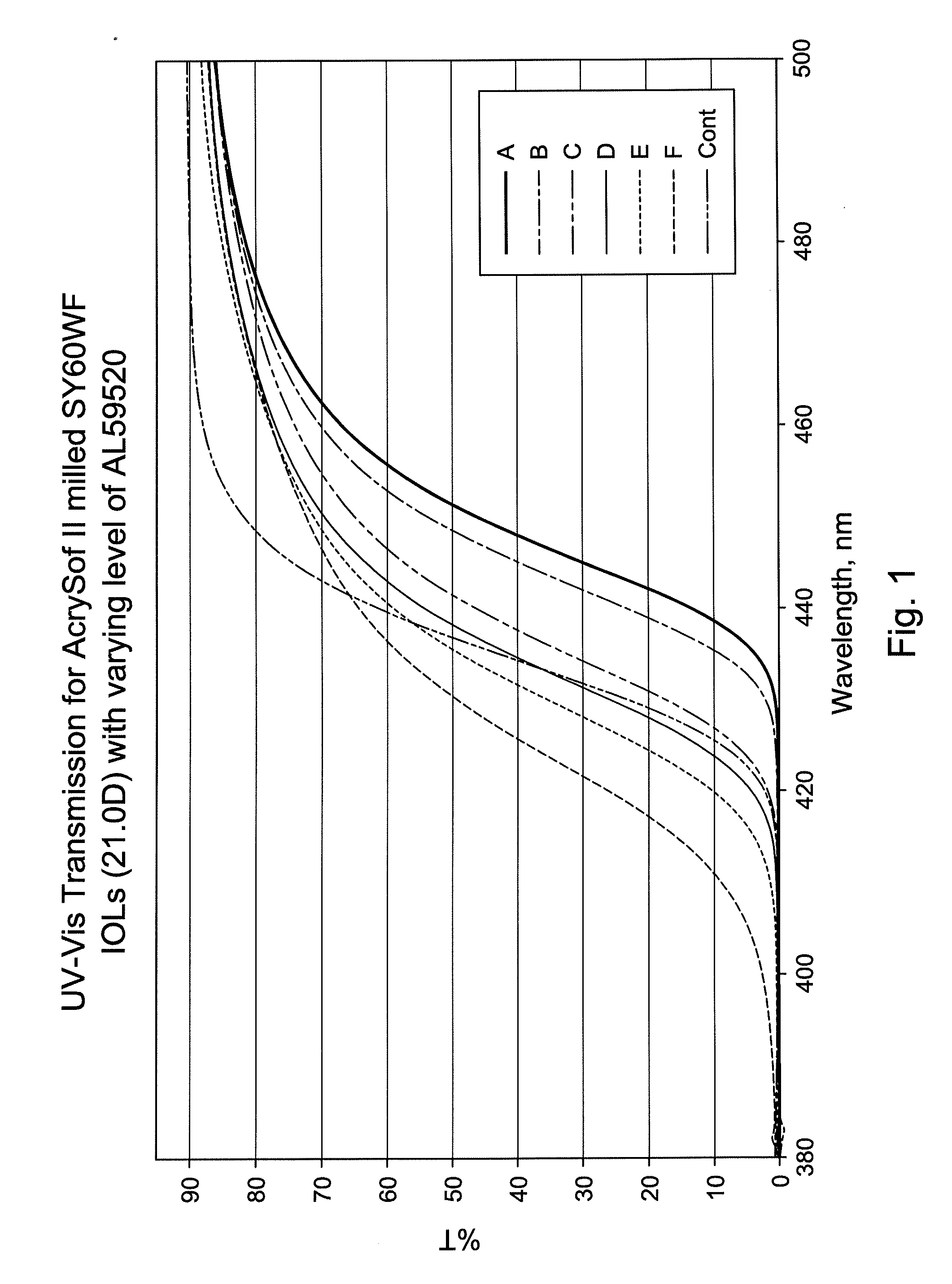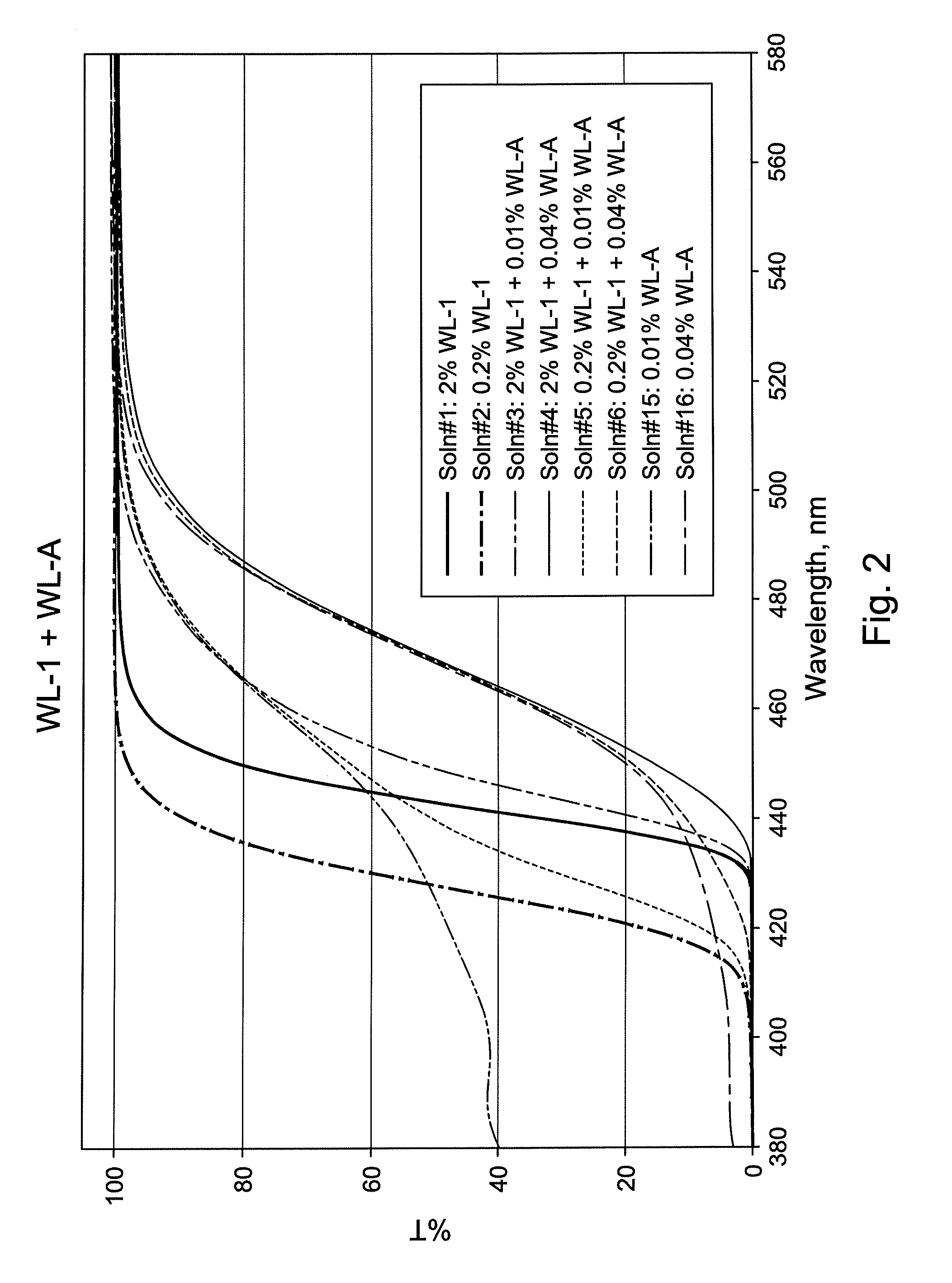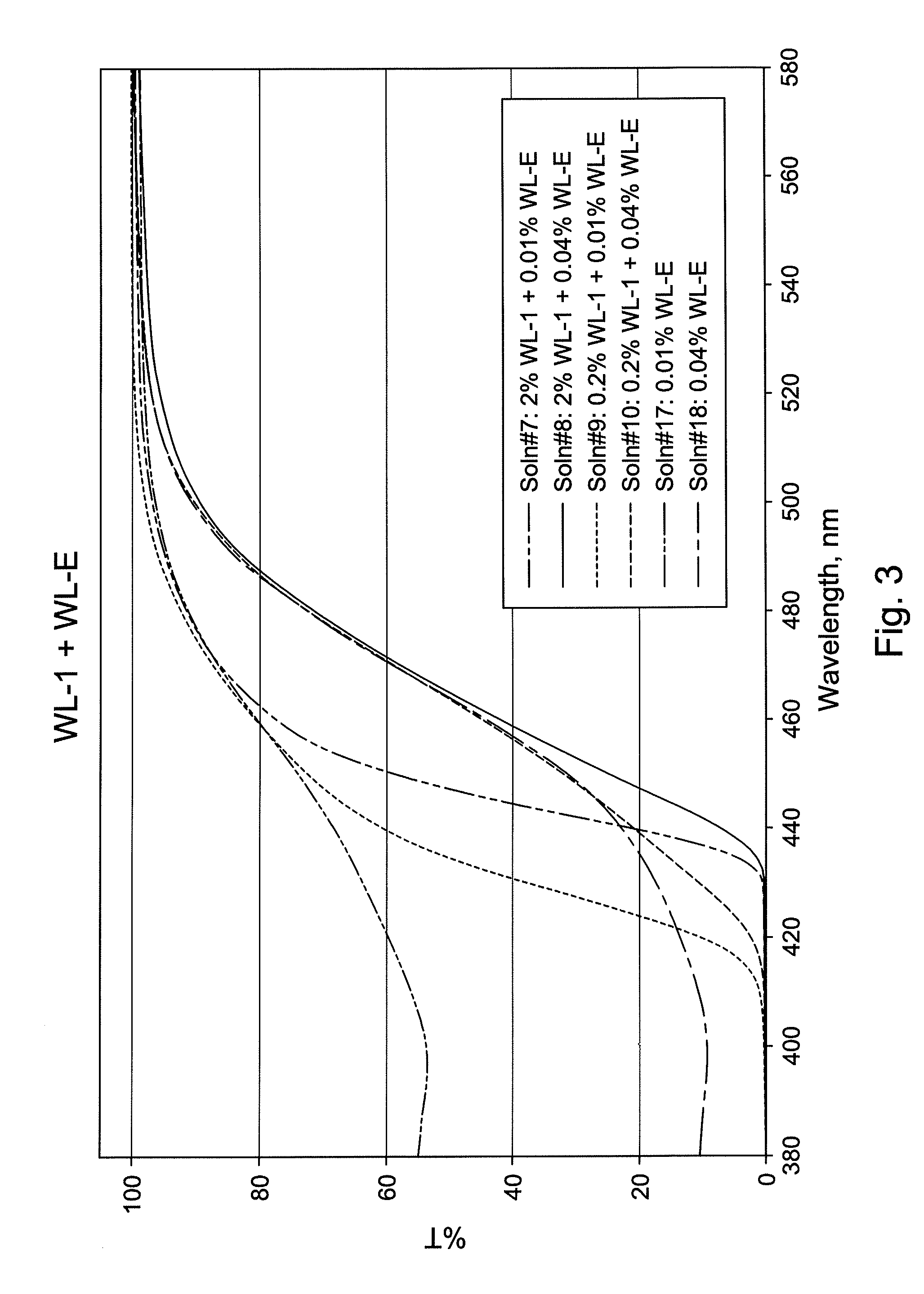Intraocular lenses with combinations of UV absorbers and blue light chromophores
a technology of blue light chromophores and intraocular lenses, which is applied in the field of improved ophthalmic device materials, can solve the problems of materials limitations, yellow dyes that cannot provide sharp cut-offs in the region, etc., and achieve the effect of wide range of transmission
- Summary
- Abstract
- Description
- Claims
- Application Information
AI Technical Summary
Benefits of technology
Problems solved by technology
Method used
Image
Examples
example 1
[0144]A monomer diluent formulation consisting of 2-phenylethyl acrylate (PEA), hydroxyethyl methacrylate (HEMA), and 1,4-butanediol diacrylate (BDDA) was prepared by mixing the three monomers together in the proportions of 80:15:3.2 parts by weight. Then UV absorber of the following formula:
and blue light chromophore in the form of yellow dye according to the following formula:
were added to 3 g of the diluent formulation as reported in Table 1 below. Each formulation was initiated with 1.8% Perkadox 16S and cured in 21.0D SN60WF lens molds at 105° C. for 3 h. The lenses were demolded, placed into stainless steel extraction trays, extracted with acetone, and vacuum dried to remove residual acetone. After extraction and vacuum drying, samples were analyzed by UV-Visible transmission spectroscopy from 300-800 nm using a Perkin-Elmer Lambda 35 instrument equipped with a Lab Sphere RSA-PE-20 integrating sphere. FIG. 1 shows transmission curves obtained from these lenses and Table 1 summ...
example 2
[0145]In example 2, solutions were formed that included combinations of UV absorbers and blue light chromophores according in concentrations that would be suitable for the device material of the present invention. In particular, twenty toluene solutions were prepared. Each of the twenty solutions contained 0.2 or 2% of the UV absorber of example 1 (i.e., “WL-1”). Six of the twenty solutions contained 0.01 or 0.04% of the blue light chromophore of example 1(i.e., “WL-A”).
[0146]Six of the solutions contained 0.01 or 0.04% of the blue light chromophore below:
Another six of the twenty solutions contained 0.01 or 0.04% of the blue light chromophore below:
The concentrations and transmission data are provided in Table 2. The transmission spectra of corresponding solutions are shown in FIGS. 2, 3 and 4, respectively.
TABLE 2AbsorberSolutionConc.WavelengthWavelengthWavelength% T @% T @No.Wt %@ 1% T@ 10% T@ 50% T450 nm500 nmWL-AConc.Wt %120430435443819920.204084174289899320.014324384495299420....
PUM
| Property | Measurement | Unit |
|---|---|---|
| wavelength range | aaaaa | aaaaa |
| wavelengths | aaaaa | aaaaa |
| wavelengths | aaaaa | aaaaa |
Abstract
Description
Claims
Application Information
 Login to View More
Login to View More - R&D
- Intellectual Property
- Life Sciences
- Materials
- Tech Scout
- Unparalleled Data Quality
- Higher Quality Content
- 60% Fewer Hallucinations
Browse by: Latest US Patents, China's latest patents, Technical Efficacy Thesaurus, Application Domain, Technology Topic, Popular Technical Reports.
© 2025 PatSnap. All rights reserved.Legal|Privacy policy|Modern Slavery Act Transparency Statement|Sitemap|About US| Contact US: help@patsnap.com



